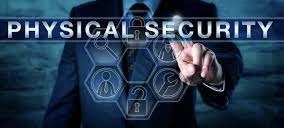What doesn’t work in safety and physical security?
I really struggled to understand why physical security didn’t look like it does in the movies. Why wasn’t the security operator at the Westin able to help me? Why weren’t the 4 teams at the Washington Navy Yard unable to access the video they needed to intercept the shooter as opposed to the 69 minutes it took to do so? (Part 4) Security hasn’t really changed in decades. Sure, screens are higher resolution and cameras are much better, and of course there are video analytics but nothing has changed substantially in decades. If it ain’t broke, don’t fix it? But is it really working?
After the Washington Navy Yard I was really perplexed. We have all seen the wall of screens in a security room, at the very least we’ve seen it in the movies or television. If you’ve ever given these screens a hard look, understanding what you’re seeing isn’t obvious. I always assumed that the operators knew the facilities so thoroughly that they could interpret the wall of screens instantly. Boy was I wrong.
Unpacking the parts of security that don’t work:
1. Cognitive Overload
There were 3 things that became clear when I did a deep dive into the science of how humans work with the wall of screens. First, there is a limit on how many screens we can track movements on at once. Beyond three screens there is cognitive overload which reduces the effectiveness of tracking.
2. Flight or Fight Response
Second, in response to a physical security alert or alarm, the body responds with “short term performance impairments” by “suppressing unnecessary functions”. This means tunnel vision, reduced hearing acuity (auditory exclusion) and reduced fine motor control (perceptual motor function). We don’t need these functions for fight or flight but they are likely very necessary in a security control and command. If you are trying to move a PTZ camera, you need to remember which area can be seen by which camera, and then you need to dial it into the control and then you need to delicately maneuvering a joystick to see the scene.
Research “maladaptive stress arousal can result in increased task errors and degradation of task accuracy” “These adverse effects primarily involve cognitive functions, such as attention, perception, and decision-making” in physical security, “Maladaptive stress arousal is also associated with hypervigilant decision-making, which is often impulsive, disorganized, and inefficient” irrespective of the responders level of training.
3. Blinded by our brains
Finally, I love math and especially extrapolation and interpolation. The power of math thrills me. And I always thought of math as an extension of the power of our brains to imagine things – accurately. My expectation was that if we knew the facility reasonably well, our brains would ‘red flag’ the blind spots for us. This seemed to be logical and reasonable assumption.
It takes a long time, around 4 months, to fully train an operator. I assumed that the purpose of this investment was so that he or she knew the facility so well that they would ‘see’ that there were holes, gaps and blind spots and know to keep this in mind while watching the wall of screens. Boy, was I wrong. In fact it’s the opposite. The brain actually ‘hides’ these blind spots from us. So once the wall of screens is in place, we think we see it all.
Security that’s not made for humans
In short, traditional command and control for physical security is not particularly well designed or adapted for humans. And we haven’t even discussed alert fatigue, distraction and training.
What happened when my daughter went missing was starting to make more sense.

